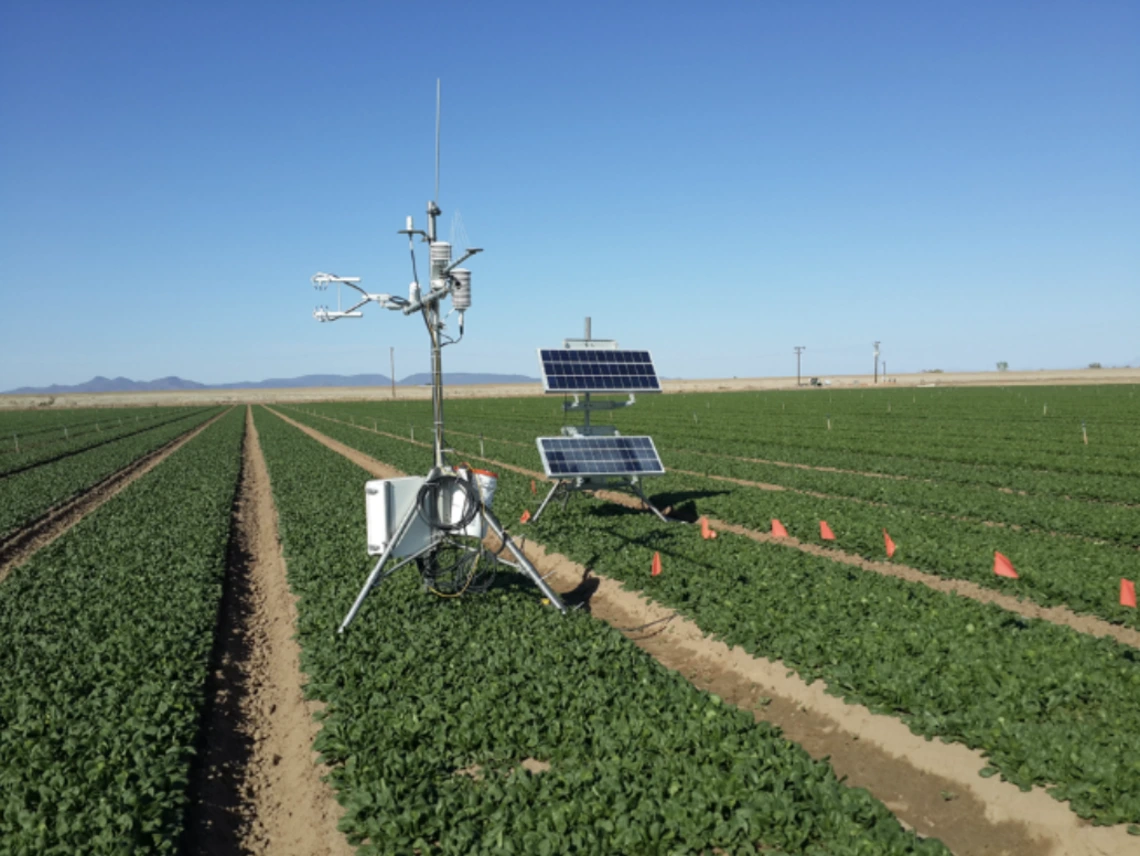Baby leaf spinach is a commodity of increasing economic importance in the lower Colorado River region in the Southwestern United States. In 2020, the total area of spinach harvested was 10,300 acres and was valued at $113.9 million, representing a $45 million dollar increase from 2010 (www.nass.usda.gov). Baby leaf spinach is planted from September through March in the low desert and is irrigated all season by sprinklers to meet the needs for the loss of water by transpiration through the crop leaf canopy and evaporation from the soil surface.
The growing period for baby spinach can range from 25 to 50 days, depending on the time of the year it is grown- days to maturity increase for mid-winter plantings and decrease when planted in warmer months. The final yields are also influenced by cutting time which depends on market demand. Using eddy covariance (Figure 1), measured ETc ranged from 90 to 130 mm (3.5 to 5.1 acre-inches). Because baby spinach is irrigated by sprinklers the entire cropping period, irrigation application efficiencies are high (>90%). However, distribution uniformity issues need to be considered in irrigation decisions. Although the solid set sprinkler irrigation systems used in the area are well engineered and are expected to provide uniform irrigation, the variation in frequency, speed, and direction of wind in Yuma can significantly distort wetting patterns, and one should not anticipate average DUs exceeding 85% (Figure 2).
The salinity threshold (ECe) for spinach is reported to be 2.0 dS/m (Maas and Hoffman, 1977). However, more recent data demonstrates that spinach is much more tolerant to salinity, with no production loss occurring from using irrigation water (ECw) exceeding 9 dS/m and soil ECe levels approaching 5 dS/m (Ferreira et al., 2018; Ors and Suarez, 2016). In the lower Colorado River region, we have observed spinach yields unaffected by soils having measured ECe levels up to 5 dS/m. The only area near Yuma where salinity is potentially problematic for spinach is the Island, where saline ground water, instead of surface water from the Colorado River, is used for irrigation. Because spinach irrigation applications are efficient, soil salinity usually increases during the growing season (Figure 3). Thus, a leaching requirement to restore salt balance would be required post-season. If spinach were the only crop in the rotation, the leaching requirement would be 4%. However, lettuce is commonly grown in rotation with spinach and the leaching requirement for sustainable lettuce production is 20%.





